DMT KM30 gravel cycling shoe review: knitted gravel shoes with a healthy dose of Italian style
DMT's take on the knitted shoe, which works well for relaxed rides and longer distances but lacks support for hard efforts
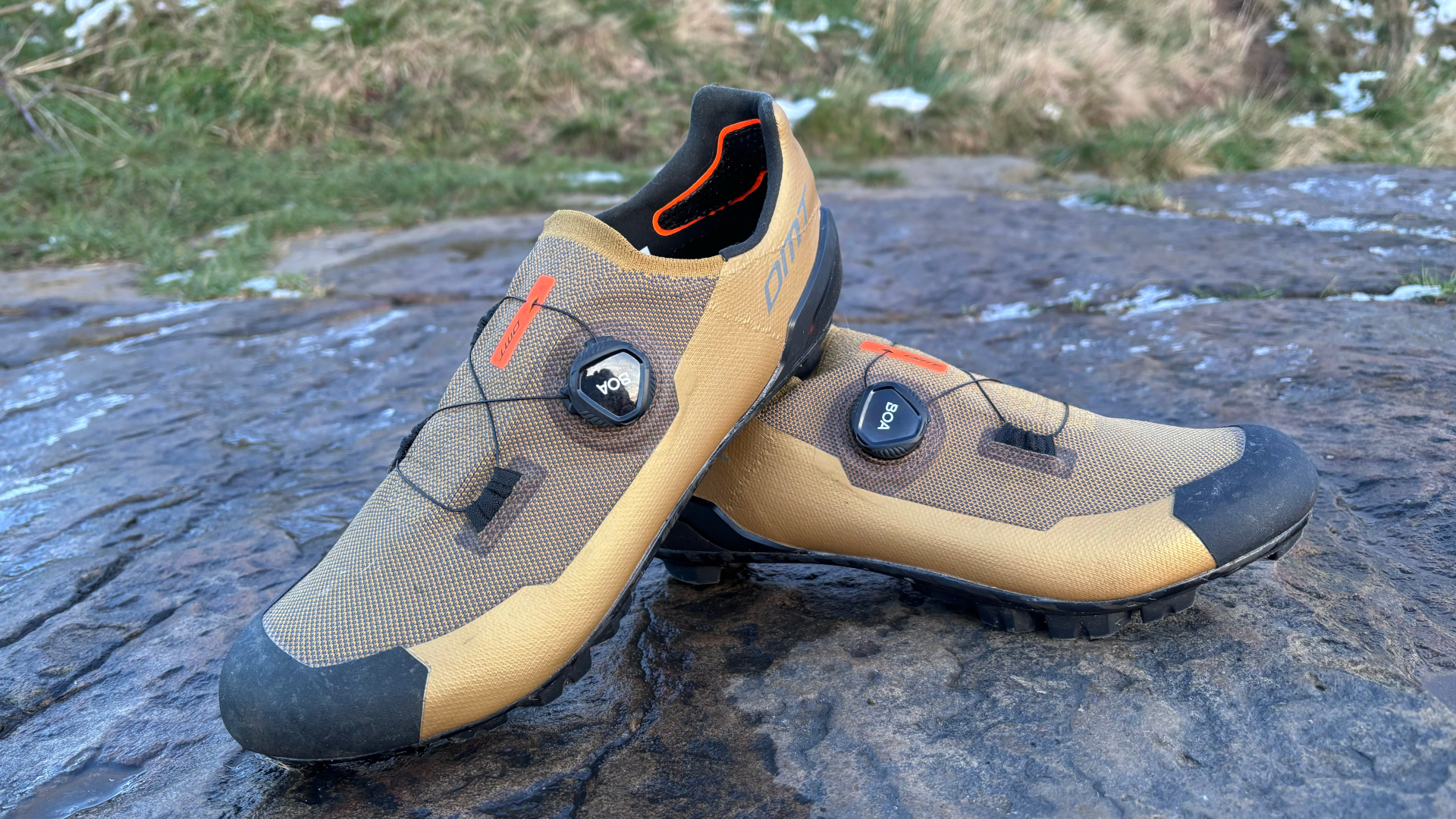
If the shape works for you, this is a comfy, very well-made shoe with a supple, soft upper. However, the single Boa dial limits the potential adjustment range, and they lack the support of more race-orientated shoes for hard efforts.
-
+
Unique look
-
+
Very comfortable sock-like fit
-
+
High-quality feel and finish
-
+
Slipper-like construction is very comfortable on long rides
-
-
Single Boa design doesn't offer as much adjustment across the shoe
-
-
Boa L6 dial only offers one-way fine-tuning
-
-
Won't provide enough support for high-intensity efforts
You can trust Cycling Weekly.

DMT has had a recent resurgence, in part thanks to a double Grand Tour winner from Slovenia. Obviously, Pog's dominance isn't just due to his choice of footwear, but I was still curious to test their KM30 off-road shoes to see how they compare to the best gravel shoes.
I say off-road, as these are actually listed as XC and Marathon shoes, but for me, their light construction and stiff soles better fit the bill of a decent gravel shoe. DMT also says they offer exceptional breathability, which hasn't been a key criterion here in a very wet Yorkshire recently. Having said that, the lack of material should mean they dry reasonably quickly.
With their 3D knitted uppers and single Boa dial, they are a very clean and slick-looking shoe. It's all too easy to roll out Italian-style tropes and cliches, but I must admit I loved the aesthetic. They got more positive comments from other riders than any other footwear I've worn recently, too, so it wasn't just me. Though if the Camel and Black I had on test aren't to your liking, they also come in Grey and Black or a simple black option.
Construction
The KM30's most striking aspect is its 3D knitted upper, which uses technical yarns and specifically engineered structures to create a material similar in construction to carbon fibre. Different weaves and thicknesses in critical areas develop a very soft and supple shoe in places, yet one that's stiff and robust enough in others for off-road use. The lack of overlapping materials and bulkier hard areas also helps keep the weight low at 334g, adding to the sock-like feeling you get when wearing them.
As the upper is one piece, it doesn't have a separate tongue and needs to be pulled on when fitting, which is a little snug, especially if you have wet feet, but I didn't find it too much of an issue, especially with smoother summer-weight socks. A solitary L6 Boa dial handles retention, which does an adequate job rather than the more expensive Li2 version used on similarly priced footwear from other brands. It only lets you adjust the tension for tightening the shoe, and not micro-release adjustments, which can be very helpful for fine-tuning the fit on longer rides.
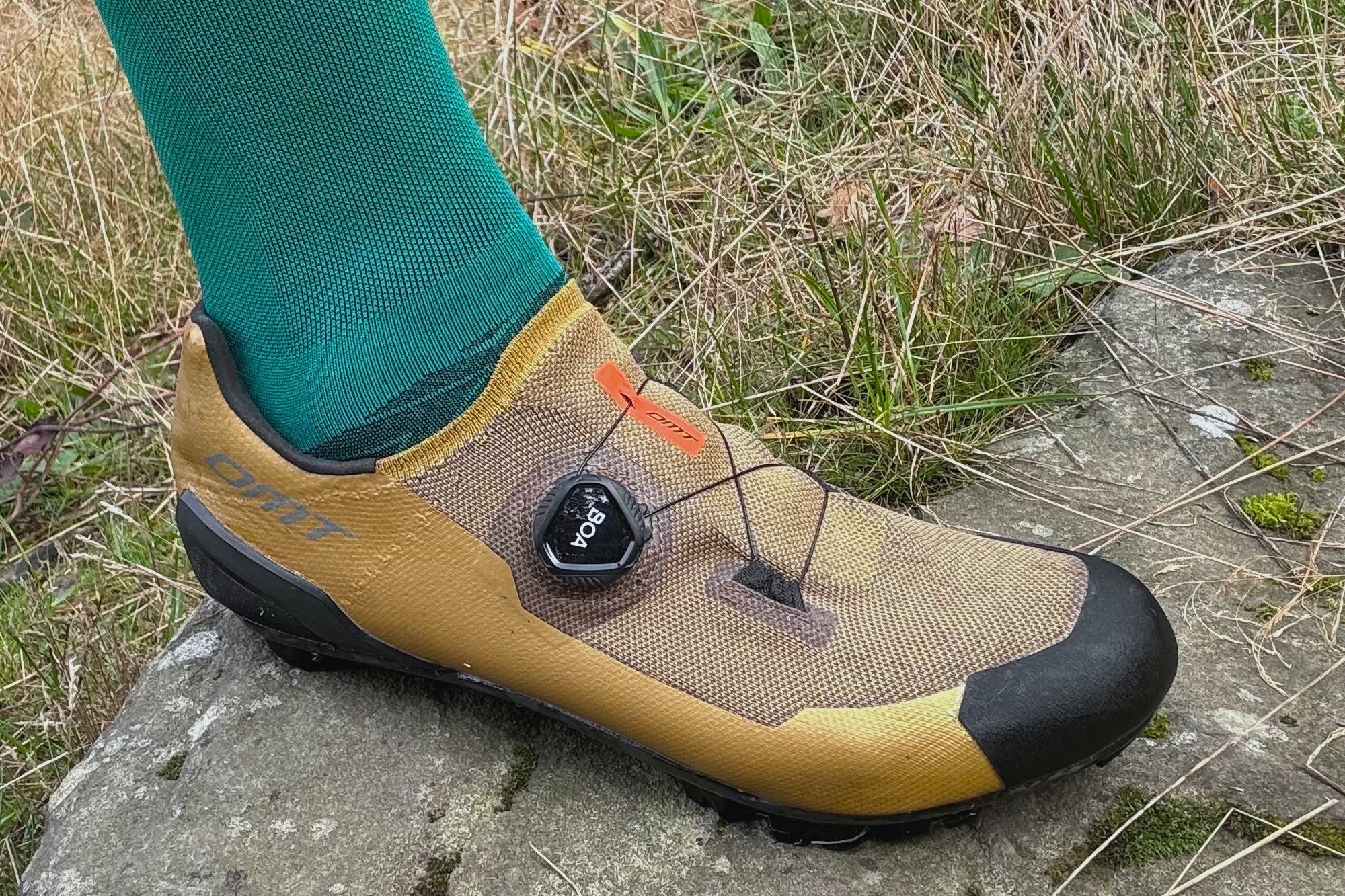
The knitted upper makes for am eye-catching and lightweight shoe
The shoes have a wear-resistant black coating on the toe and sides, with extra protection around the toe box and heel areas. Both coatings are thin but have held up well over a summer of testing. The thin material complements the minimal aesthetic, giving the shoe a smooth, sleek outline.
As a shoe earmarked for MTB XC racing and marathon, it's no surprise to see it has a light and stiff sole. However, there is no arbitrary stiffness rating here (which is mainly pointless, as there is no overall standard, just a brand's definition). DMT says the sole is aerated, though bar the cleat holes there aren't any vents I could see or notice when riding. It also features replaceable rubber sections around the cleat area and the heel cup for off-the-bike sections, which offer just about enough grip when walking unrideable portions. However, I wouldn't recommend using them for long treks or technical rocky climbs, as the sizeable exposed carbon area can be slippier than a more predominantly rubberized sole.
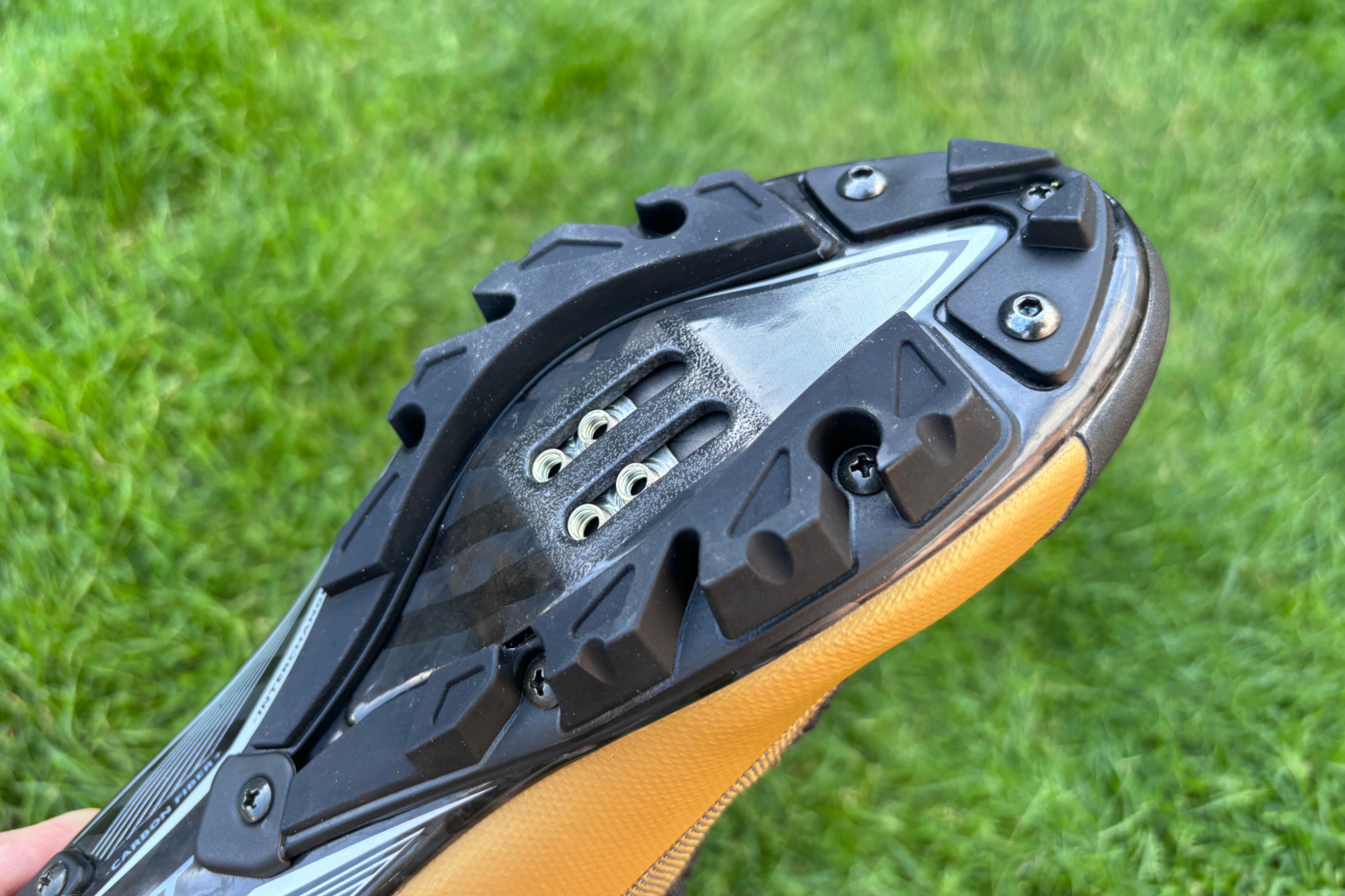
The rubber treads provide a decent amount of traction while the carbon sole provides plenty of stiffness.
Fit-wise, they are on the narrower end of the spectrum, but they are still not super narrow. DMT's site has an in-depth interactive size guide that lets you compare like-for-like sizing with other brands, which I found helpful. I went for the 44, which, with my feet measuring 270 long and 105mm wide, was a snug but not restrictive fit and similar in feel to the regular-width Lake MX30G shoes I had on test at the same time.
The ride
The first thing you notice with the KM30 is how the lack of a moveable tongue can make getting the shoe on a bit trickier than one with a separate one. It's not crazily hard, but it needs more wiggling to get into place, especially if you have thick or rougher woolen-style socks on. Once on, that's quickly forgotten. The MK30 felt unlike any other shoe I've worn, with a feeling closer to a heavy-duty waterproof sock than a traditional cycling shoe.
The upper has a very fluid feel, and it moulds very quickly to the shape of your foot. It fits me perfectly off the bike, though the choice of a single L6 Boa dial becomes apparent once you are riding. The last (internal shaping) of the shoe worked well for me, so I didn't need to adjust much, but it was clear when I did there is a limit to how much you can tighten the shoe before the fabric pinches, which can be felt on the top of the shoe. The single closure also means there's no way to fine-tune the fit, so if you find it a bit loose in the midfoot region, there's no way to tighten that section without squeezing the rest of your foot. This would be easily solved with a second dial, which, to be fair, they do offer on the pricier MH10 shoes (£249.99/ $369).
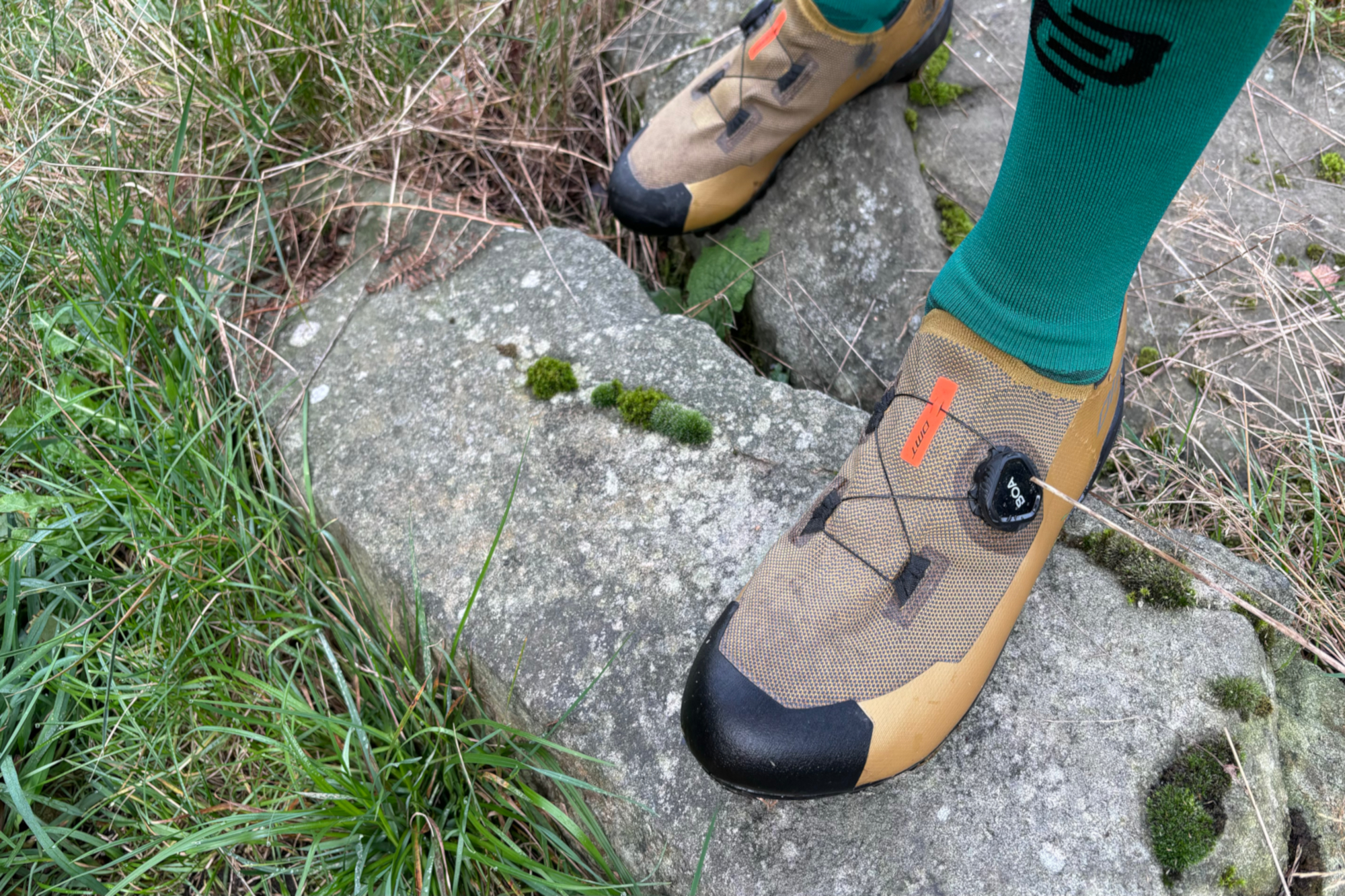
A single Boa dial equates to limited adjustment.
The soft and flexible upper contrasts with the stiff sole. This might be unsettling if you are used to a fully supported shoe like the Shimano S-Phyre range or any Bont shoe. When sprinting or pushing hard, it can feel like your foot wants to roll outwards. This was particularly apparent on fast group rides, where I was aware of the shoe moving under load, but it wasn't an issue for more gentle-paced rides, which luckily make up most of my gravel riding.
Insoles can be a very personal thing, and I often like to go for mid- to high-arch support. However, the standard version supplied in the KH30 worked well for me. The rear of the shoe also features an internal silicone section that helps heel retention, which keeps the shoe in place, even on longer hike-a-bike sections on rocky trails. However, there is no adjustability, and they lack the close, supportive feel I got from the Lake MX30g and the Shimano RC903 I had on test at the same time, which both had a more solid feeling cup section that went further up the heel.
Value and conclusions
At £239 / $339, these are at the higher end for gravel shoes, though not crazy for a premium European brand. I would strongly advise trying before you buy if you can, though. The shoes are very well finished and made to a very high standard, but the limited adjustment range means the shape will either work for you or it won't.
I was lucky enough to be like a cycling Cinderella and found they fitted me perfectly. However, with the Boa's lack of range and single location, they could easily have been too tight in places, and not being able to adjust specific areas of the shoe would be irritating at such a price point.
If you are looking for a super solid shoe and tend to move about on the pedals a lot when putting the power down, these won't be for you. But if you want stylish and comfortable shoes for covering distances off-road with a touch of Italian style, then these could be just what you're after.

Thank you for reading 20 articles this month* Join now for unlimited access
Enjoy your first month for just £1 / $1 / €1
*Read 5 free articles per month without a subscription

Join now for unlimited access
Try first month for just £1 / $1 / €1
Get The Leadout Newsletter
The latest race content, interviews, features, reviews and expert buying guides, direct to your inbox!
You must confirm your public display name before commenting
Please logout and then login again, you will then be prompted to enter your display name.
-
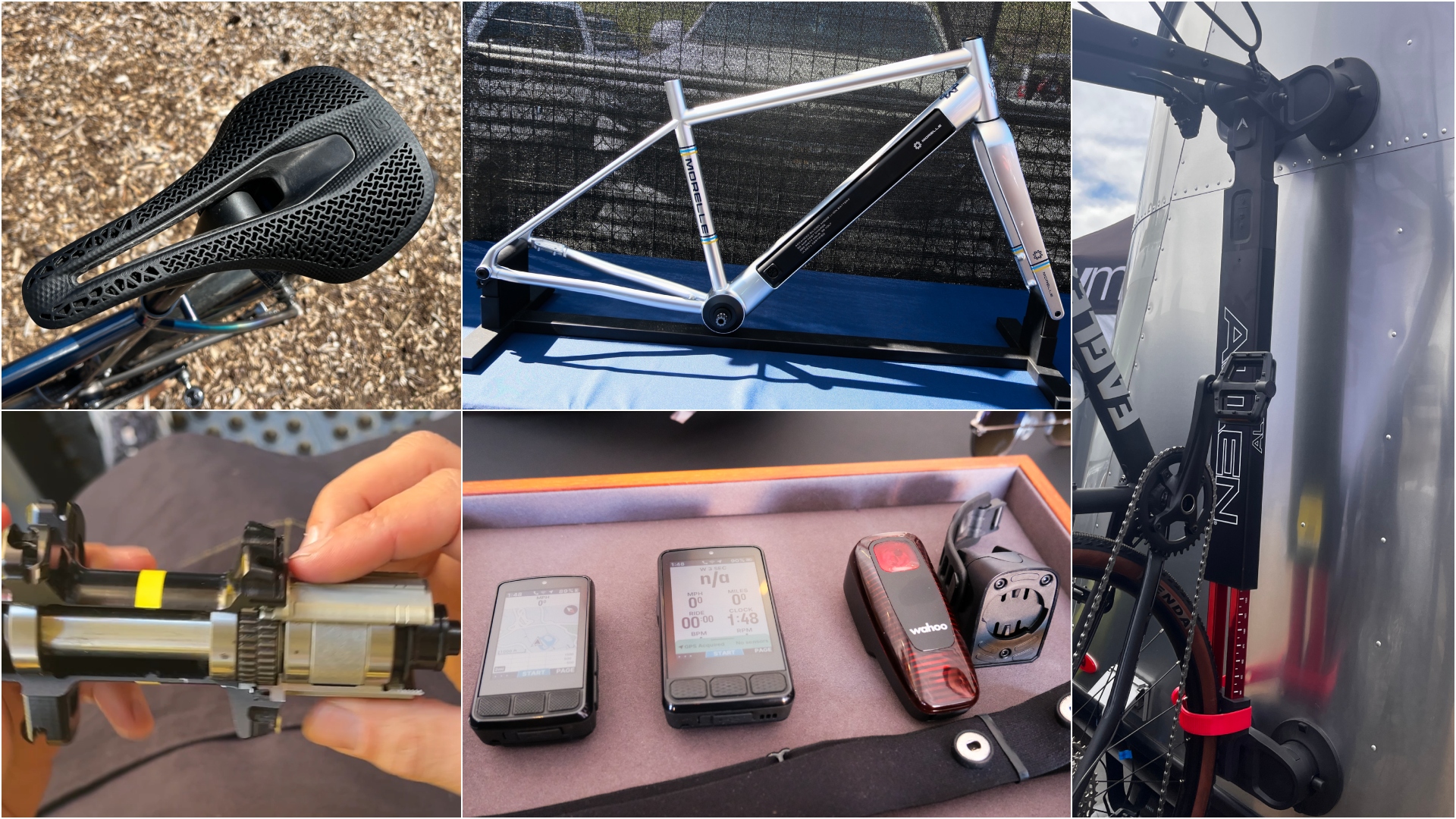 A bike rack with an app? Wahoo’s latest, and a hub silencer – Sea Otter Classic tech highlights, Part 2
A bike rack with an app? Wahoo’s latest, and a hub silencer – Sea Otter Classic tech highlights, Part 2A few standout pieces of gear from North America's biggest bike gathering
By Anne-Marije Rook Published
-
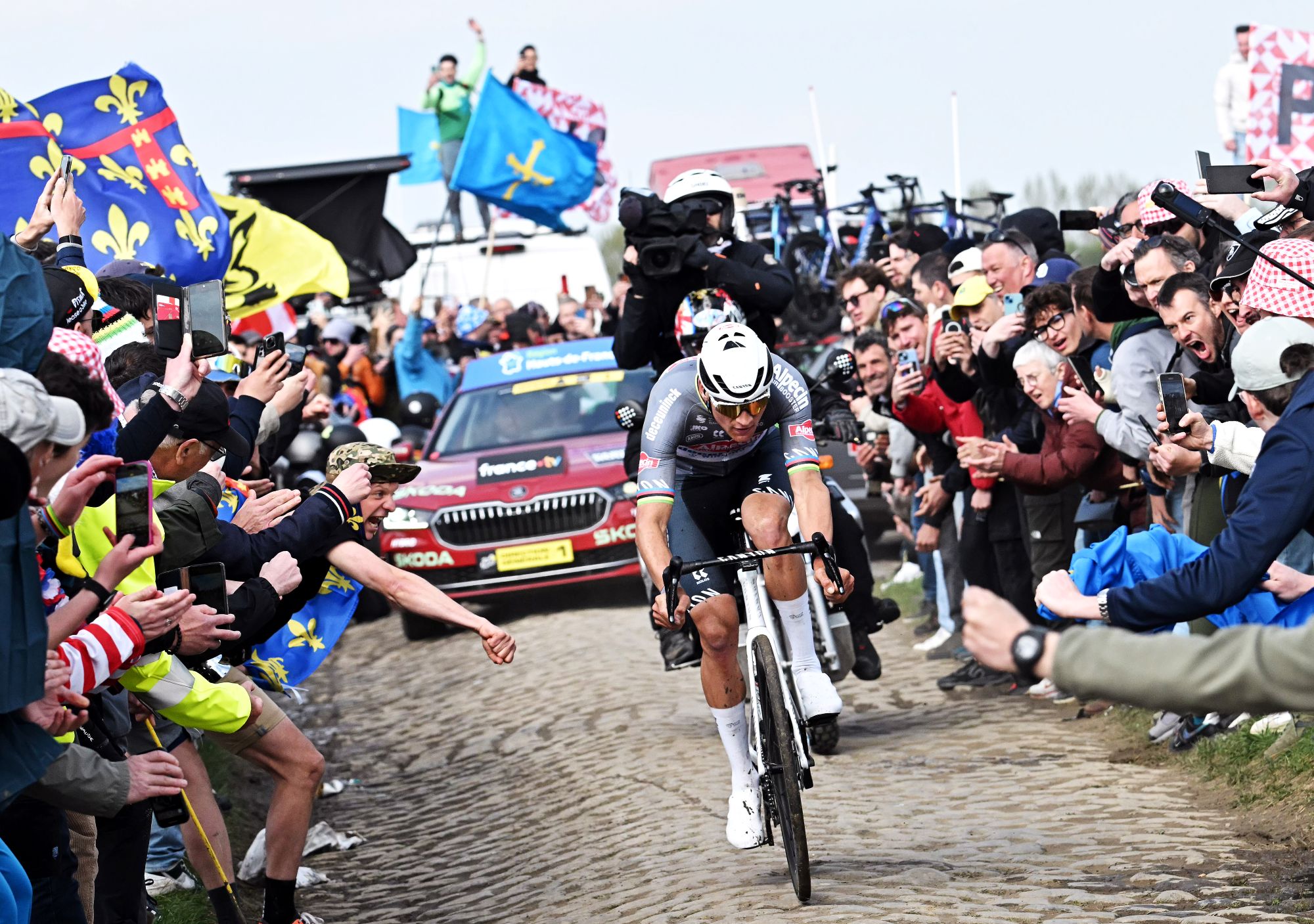 Cycling's riders need more protection from mindless 'fans' at races to avoid another Mathieu van der Poel Paris-Roubaix bottle incident
Cycling's riders need more protection from mindless 'fans' at races to avoid another Mathieu van der Poel Paris-Roubaix bottle incidentCycling's authorities must do everything within their power to prevent spectators from assaulting riders
By Tom Thewlis Published
-
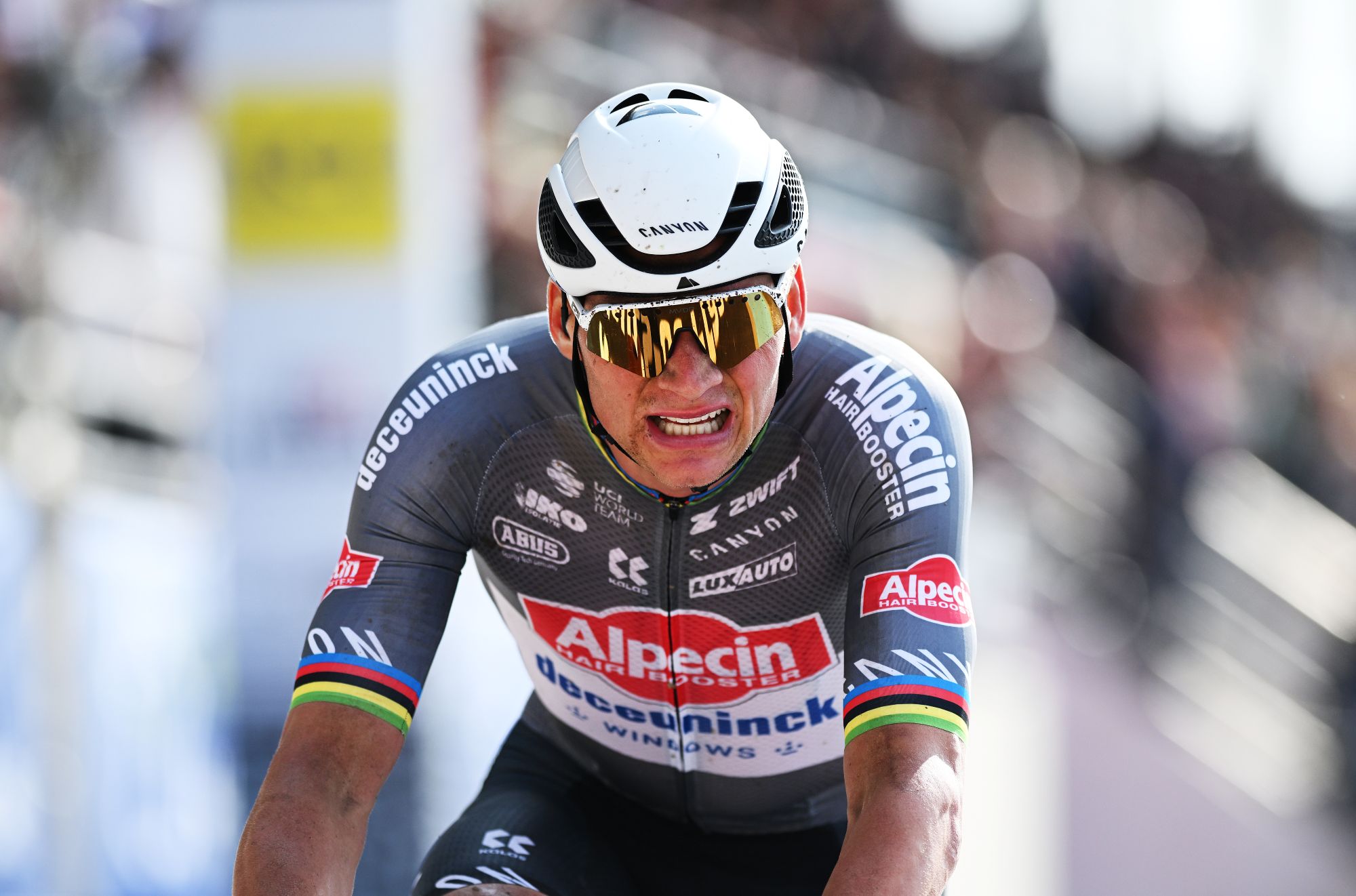 Man hands himself in to Belgian police after throwing full water bottle at Mathieu van der Poel during Paris-Roubaix
Man hands himself in to Belgian police after throwing full water bottle at Mathieu van der Poel during Paris-Roubaix30-year-old was on Templeuve-en-Pévèle cobbled sector when television pictures showed the bottle hitting him in the face
By Tom Thewlis Published
